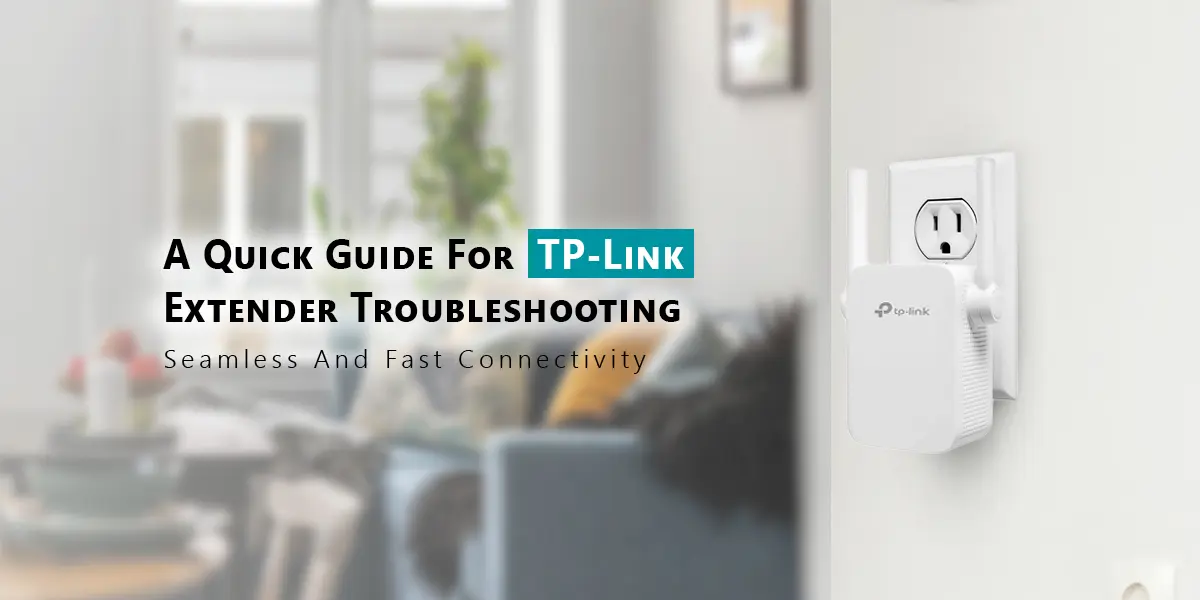
A Quick Guide For TP-Link Extender Troubleshooting
In today’s connected world Wi-Fi coverage is crucial for seamless internet access across your home or office. TP-Link extenders are popular solutions for extending Wi-Fi range but like any technology they can sometimes run into issues. This guide will take you over TP-Link Extender Troubleshooting common problems safeguarding your device.
1. Understanding Your TP-Link Extender
Formerly plunging into troubleshooting, it’s indispensable to comprehend the rudimentary components and tp link extender setup. TP-Link extenders work by connecting to your existing Wi-Fi network and rebroadcasting the signal to areas with weak coverage. They typically have LED gauges to show the position of the linking and power.
Key Components:
- The Power LED indicates whether the extender is on.
- The Signal LED indicates the strength of the connection to your router.
- Ethernet ports allow for wired connectivity to devices.
- The Reset button restores factory settings.
2. Common Issues and Solutions.
Issue 1: Extender Is Not Linking To The Router.
If your extender isn’t involving to your router execute these steps:
Check Placement
Ensure that your extender is inside the router’s range. Extenders require a strong signal to rebroadcast so don’t place them too far from your router.
Verify The Wi-Fi Credentials
Ensure that you input the right Wi-Fi name (SSID) and password during setup. An incorrect password will block connection.
Reboot Devices.
Sometimes a simple reboot will fix connectivity problems. Turn off your router and extender
Update Firmware
Outdated firmware may cause compatibility concerns. Check TP-Link’s website for the most recent firmware updates for your model then follow the instructions to update.
Issue 2: Weak Signal From The Extender
If the signal from your extender is weak consider the following tips:
Optimal placement.
Place the extender intermediate among your router and the province with deprived Wi-Fi reception. Avoid installing it in dead zones with weak router signals.
Reduce Interference.
Electronic equipment thick walls and metal items can all hinder with signals.
Change Wi-Fi Channels
Interference from neighbouring Wi-Fi networks can have an impact on signal strength. Login to your router settings and try varying the WiFi channel.
Issue 3: Extender Keeps Disconnecting.
If your extender keeps disconnecting, try these TP-Link Extender Troubleshooting steps:
Check The Power Hoard.
Validate that the extender is wrought into a consistent power hoard. Unstable electricity can lead to disconnections.
Verify The Firmware Version.
Outdated firmware might cause instability. If there is a newest version of the firmware accessible apprise it.
Factory Reset.
If the problem persists attempt a factory reset. Using a paperclip push the reset button for around 10 seconds until the LEDs blink. Reconfigure the extender according to the setup documentation.
3. Advanced TP-Link Extender Troubleshooting : Using The Extender Web Interface.
Accessing the web interface might give you additional control over your extender’s settings. Here is how you can access it:
- Connect with the Extender.
- Open a browser. Enter http://tplinkrepeater.net or the extender’s IP address (typically located in the user handbook) into your browser.
- Use the default tp link extender login credentials (admin/admin).
- Change the default security credentials after the initial login.
- Adjusting Advanced Settings: DHCP Settings
- If your router handles DHCP ensure that the extender’s DHCP server is off. This avoids IP address clashes.
- To reduce interference on 2.4GHz networks set the channel width to 20MHz.
- To ensure compatibility match the network mode of the extender to that of your router (for example both set to 802.11n).
4. When To Contact Experts.
If you’ve done all of these methods and your TP-Link extender is still not working properly it may be time to contact TP-Link assistance. Provide them with information about your setup the glitches you are facing and the steps you have before now made. This information will allow them to more efficiently diagnose the problem.
5. Preventive Measures.
To avoid future troubles with your TP-Link extender take the following precautionary measures:
- Firmware updates occur on a regular basis.
- Check your extender’s positioning on a regular basis especially if you move your router or add new devices that may create interference.
- Reboot your extender and router on a regular basis to renew the connection and avoid small difficulties from becoming major ones.
Final Thoughts
TP-Link Extender Troubleshooting can be simple with a methodical approach. Begin with basic checks and graduate to higher settings as needed. Understanding your equipment and following these instructions can help you maintain a steady and reliable Wi-Fi connection throughout your house or office. Remember if all else fails Our experts is always available to help you.